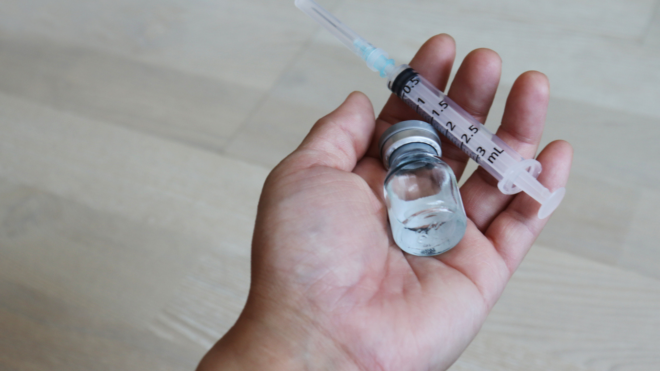Tiger stripes. Zebra stripes. Pregnancy lines. "My baby's autograph." Striae distensae. Whatever you want to call your stretch marks, the fact is, they're still there. On your body. Not going anywhere. Want to know why?
Here, 10 science-based facts about those weird lines on your belly or thighs. And while reading this won't make them vanish, it may make you feel slightly more okay having them.
1. You get stretch marks when your skin's stretched. Which sounds kinda gross, so try not to think about it too much. But when that happens, the collagen that makes your skin's connective tissue gets whacked out. Strech marks are the scars that form as a result.
2. Stretch marks aren't just for stomachs. The most common parts of the body where women AND men get stretch marks? The belly, thighs, hips, breasts, upper arms, and even the lower back. So there's that.
3. You don't have to be pregnant to get them. (Although 50 percent of expectant moms do.) In fact, stretch marks are a pretty normal part of puberty. That's because girls and boys are gaining weight and growing super-quickly. (Weight gain at any point in your life will cause them to appear, too.)
4. They change color. Stretch marks start off red or purple, then get a glossy sheen over time, which turns skin white, gray, or silver. Doesn't that make them sound pretty?
5. Steroids can cause stretch marks. Whether you're taking oral corticosteroids or rubbing a steroid cream onto your skin, this type of med can basically give you stretch marks. That's because they increase your cortisone, a hormone that weakens the elastic-y fibers in your skin.
More from The Stir: Supermodel Embraces Her Stretch Marks as 'Tiger Stripes' (PHOTO)
6. They run in the family. If your mom has stretch marks, your risk of having them rises. Genes do play a part, like it or not.
7. There's no proven, fast OTC "fix." Sorry, stretch mark treatments won't do much good. Despite the ads you see promising to instantly make your t-stripes disappear, it ain't gonna happen. The good news: These creams and lotions won't hurt!
8. Some medical treatments CAN help. Your doctor can prescribe a retinoid cream to fade stretch marks, or you could have laser therapy to stimulate your skin's collagen production. Microdermabrasion, which buffs off dead skin cells and encourages new ones to grow, can help, too. But sadly, there's no 100 percent effective treatment for stretch marks.
9. Your health insurer doesn't want to assist you on your quest to get rid of them. Want to seek cosmetic treatment for your marky marks? Don't expect your insurance company to pay for it. Stretch marks are considered a cosmetic, not medical, issue. (Even if they are painful for your self-esteem.)
10. Massage is the best prevention. Finally, a bit of good news! Daily massage with lotion on the areas most prone to stretch marks MAY stave them off. It's unclear yet what kind of lotion works best, in case you were wondering. (The ancient Romans used olive oil.) Some experts think keeping your skin hydrated helps, too. Which means lubing up AND drinking lots of H2O.
Image Morgan Webb-Battista




